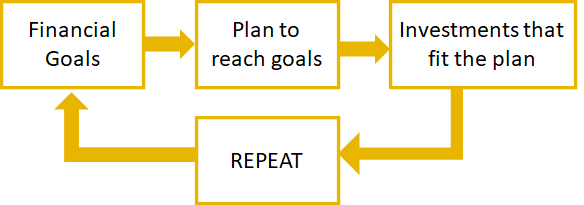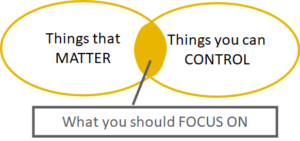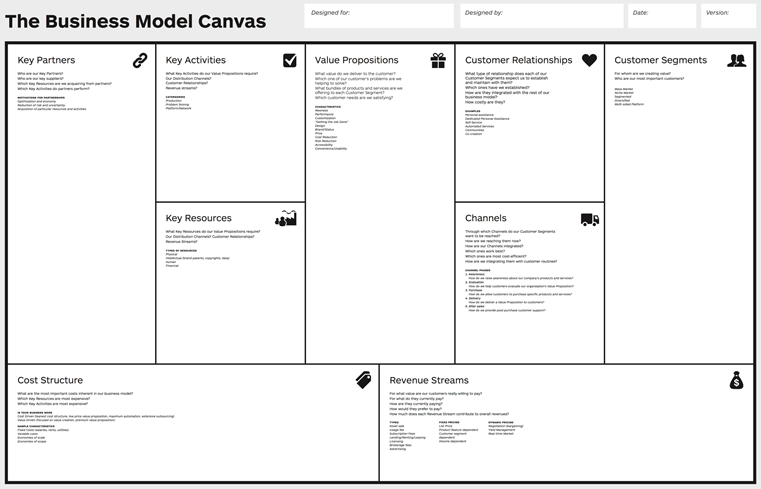Module 1
INTRODUCTION
This module will help you with the first steps in understanding business models.



Introduction
Definition of the Business Model
The literature presents many different definitions of business models.
Generally speaking, “the business model can be described as a system of interconnected and interdependent activities that determines the way the company ‘does business’ with its stakeholders. In other words, a business model is a bundle of specific activities – an activity system – conducted to satisfy the perceived needs of the market. It specifies which parties within or as business partners conduct which activities, and how these activities are linked to each other“. (Zott & Amit, 2017, p.20)
At a higher level of detail, the business model relates to the way the enterprise operates and creates value for stakeholders (Casadesus-Masanell, Ricart, 2010), with emphasis being placed on various aspects of the enterprise’s functioning.
Examples of definitions of a business model:
-
- A business model is “A method of building and using resources in order to offer customers an offer better than the competition and generating profits in the short and long term”. (Afuah & Tucci, 2000)
- A business model incorporates “Total decisions of management, concerning, inter alia, payroll, contracts, real estate location, vertical integration, sales and marketing initiatives, etc., and the impact of these decisions on how value is created for the customer and on the way the company operates in general”. (Casadesus-Masanell & Ricart, 2011)
The business model may be thought of as a description of an organization’s logic and methods through which daily operations are run (Falencikowski, 2013).
Based on an analyses by Porter (2001), a business model is a description of an enterprise’s activity that provides it with profits.
A comprehensive approach towards mapping business models may illustrate the methods a company adopts towards generating revenue, sustaining operations and offering value to customers. Business models are able to help entrepreneurs maximize profits, while also providing an avenue to develop and sustain a permanent competitive advantage.
Classification of the Business Models
One of the most general classifications with regard to market relationships is:
-
- B2C (Business-to-Customer) – enterprises try to attract individual clients. This is the model that has been most developed since 1995.
- B2B (Business-to-Business) – enterprises direct their goods and services to other enterprises. This type of business model generates the highest cash flow.
- C2C (Customer-to-Customer) – in this case, the possibility of exchanging goods between consumers is organized, e.g. through online auctions.
- P2P (Peer-to-Peer) – consists of using the Internet in such a way that users directly share files, without having to transfer them through the main server.
- M-commerce (Mobile Commerce) – refers to wireless devices through which transactions are made. It uses a wireless connection in laptops, telephones, etc.
Developing of the Business Models
In developing business models, the following principles should be taken into consideration:
-
- ensuring the implementation of two basic functions for enterprise and entrepreneurship, i.e. marketing and innovation,
- productive use of resources,
- profit imperative and its relation to business risk,
- innovative value creation for the customer and added value,
- gaining a competitive position on the market.
How can an entrepreneur use the BM
The business model (BM) is the starting point for a company to gain a sustainable competitive advantage and thus maximize profits. However, a model that is well suited to the specifics of the enterprise enables entrepreneurs to effectively achieve their goals.
The list of possibilities for using the business model in the current operations of an enterprise is long:
-
- a business model is a tool that specifies the product offer, communication, distribution and sales channels,
- enable the definition of target groups of the company’s products,
- it is the basis for the optimization of innovative technologies and the creation of marketing strategies,
- may be used as a tool to promote changes in the company and adapt it to the current (changing over time) market situation.
What are the benefits of having a BM?
One of the key benefits of having a business model (BM) is the company’s know-how documentation which is developed and constantly updated at the stage of business analysis, without which it is impossible to legally protect the so-called “Business secrets“, particularly in the area of operating methods. This allows avoiding commissioning further costly business and pre-implementation analyses.
The business model also enables the organisation:
-
- to be informed about the products and services offered,
- allows for a comprehensive and better description and grouping of processes,
- allows a better understanding and more effective management of these processes.
|
|
|
One undoubted benefit of having a business model is the effective implementation of the company’s goals and the more effective day-to-day management of the company, including making organisational decisions regarding, for example, the implementation of new management techniques or IT systems, and the identification of areas of the company in which changes should be made and the subsequent consequences.
Briefly speaking, the business model allows you to answer the following questions:
-
- where does the company get the money from,
- what does it sell,
- to whom it sells,
- when is success achieved.
The Business Model Canvas
One of the most frequently used business model templates is the Business Model Canvas, developed by Alexander Osterwalder in cooperation with 470 practitioners from 45 countries. The Business Model Canvas consists of nine basic areas that make up the process of generating profits by the enterprise and these refer to the main areas of business activity.
Customer Segments
|
This refers to the definition of the target group or groups of customers, recipients of the company’s product offer. Defining the right target group is crucial because customers are the source of income. By identifying the most important features and needs of customers, segmentation enables the company to better adjust its offer to them (customers with similar characteristics should be in one segment). Guiding questions:
|
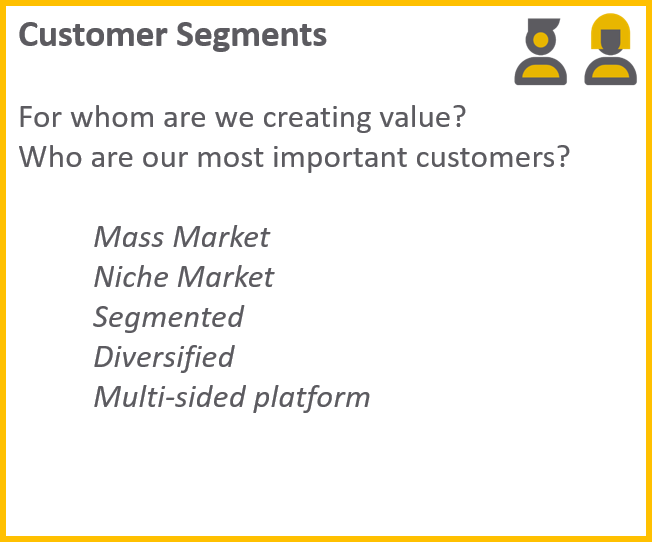 |
Value Proposition
|
This refers to a certain value offered to customers, i.e., a set of products or services that are important to them and that meet customer expectations to a greater extent than the products offered by the competition. The value proposition aggregates the benefits that the customer will receive. Guiding questions:
|
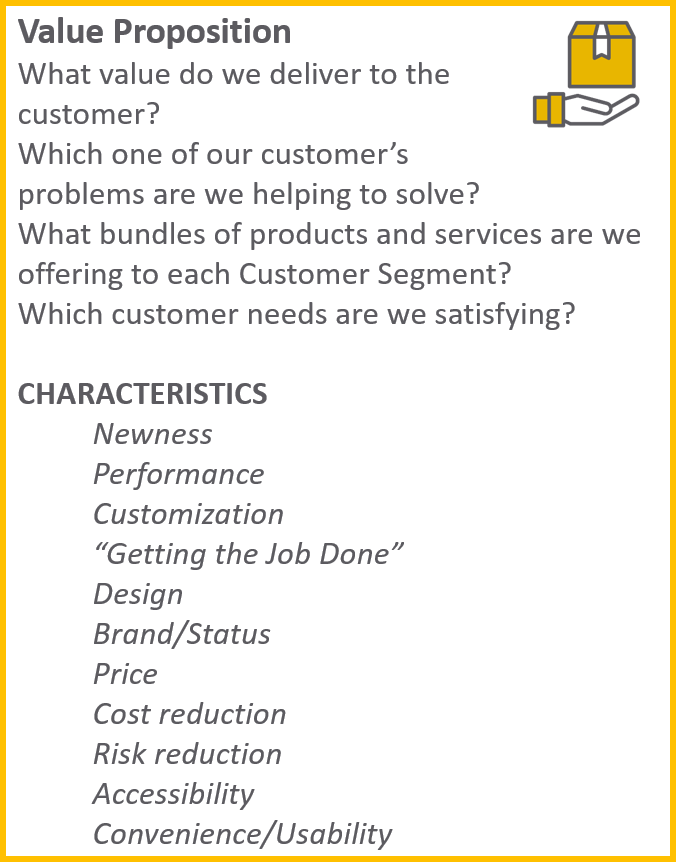 |
Channels
|
This relates to the ways in which the enterprise delivers the value proposition to the customer, i.e., communication, distribution, sales channels. They indicate the points of contact between the customer and the company and its brand. Guiding questions:
|
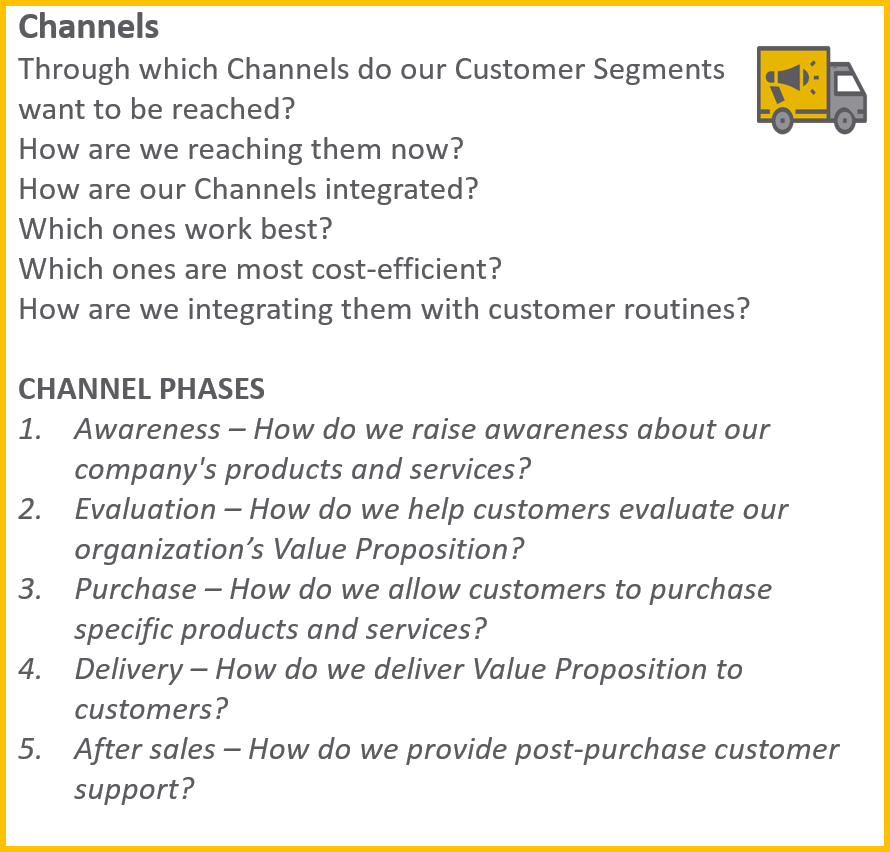 |
Customer Relationships
| This refers to the characteristics of the relationships that the enterprise establishes with its customers when communicating the value proposition. It may either be a very personal relationship or a fully automatic service. The company should clearly define what kind of relationship it wants to enter into with its clients.
Guiding questions:
|
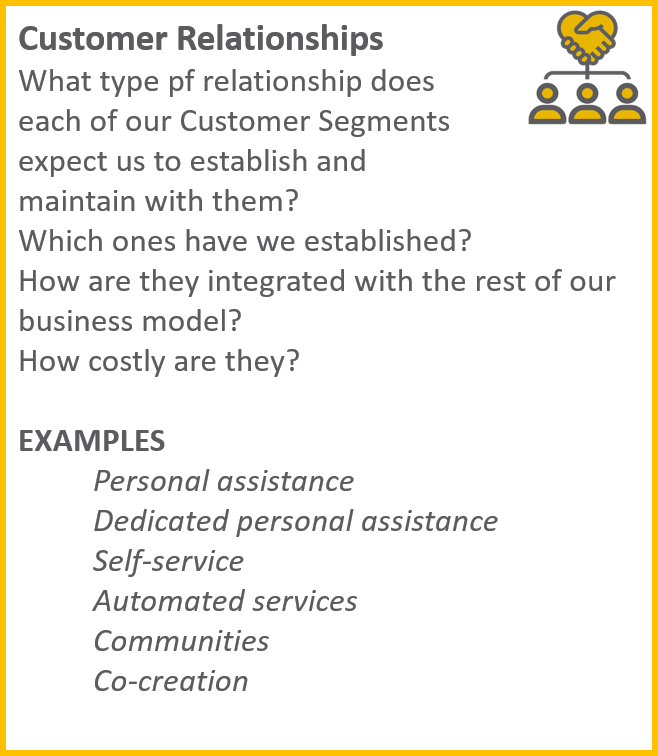 |
Revenue Streams
|
This refers to an indication of how the product or service on offer will generate income or value, i.e., for what value and how much are customers willing to pay. A company may have a slightly different pricing mechanism for each customer segment. Guiding questions:
|
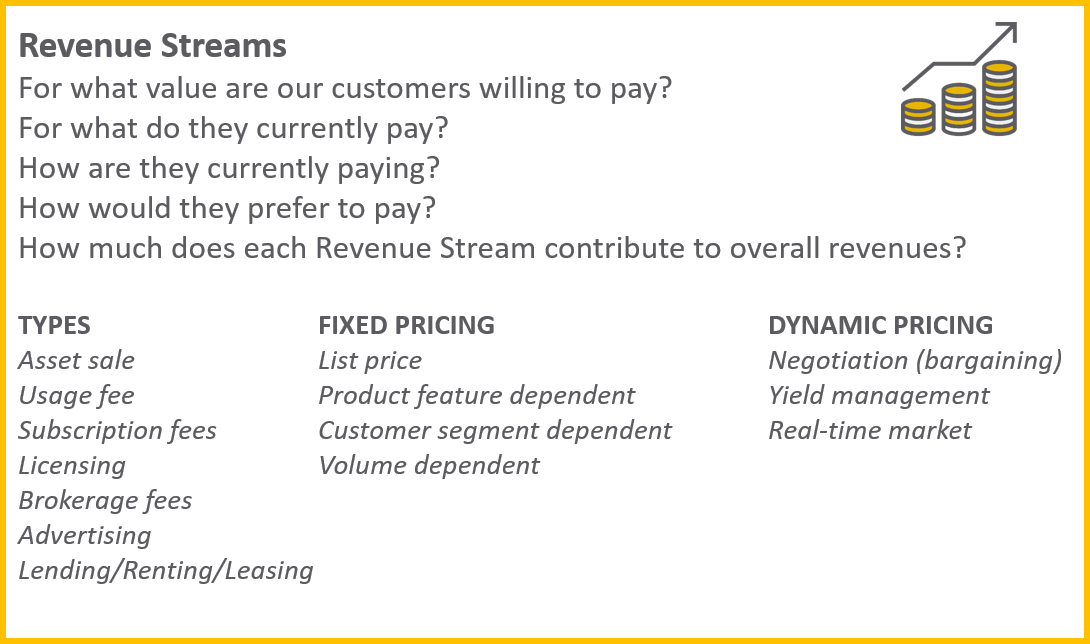 |
Key Resources
|
This refers to the indication of resources, i.e., tangible and intangible assets needed for customers to receive the appropriate value. For one enterprise there may be machines, raw materials, infrastructure or production materials, for another, human capital. Guiding questions:
|
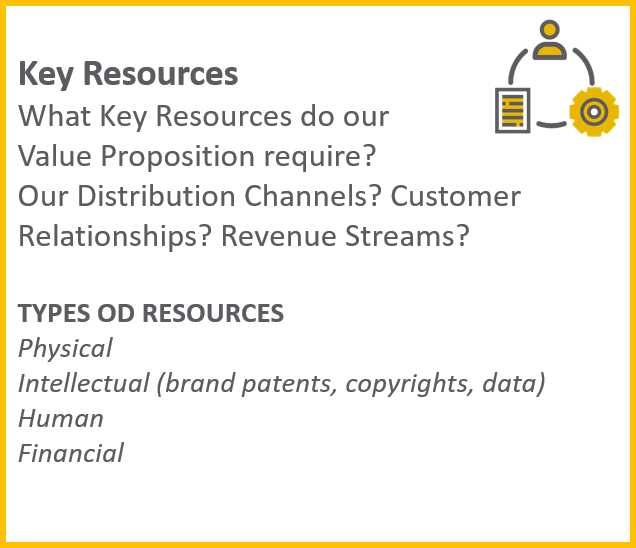 |
Key Activities
|
This refers to the identification of activities that are key to creating and delivering the value proposition to the clients. As with resources, the type of key activities which are identified depends to a great extent on the nature of the business. Guiding questions:
|
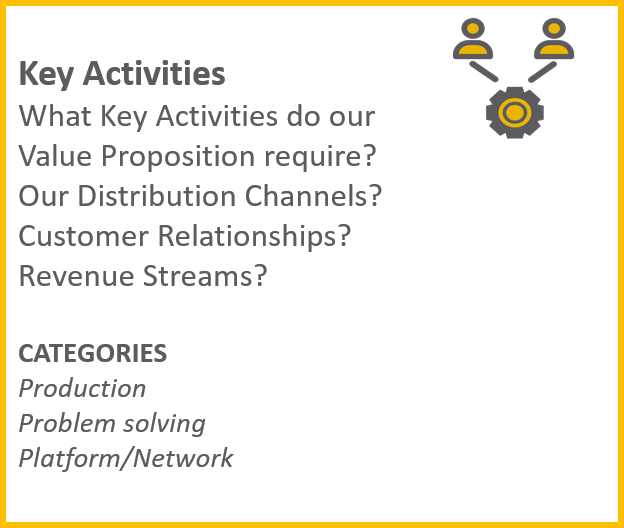 |
Key Partners
|
This refers to the identification of companies or organizations whose products or services are necessary to offer the value proposition. Suppliers or subcontractors often become key partners. Guiding questions:
|
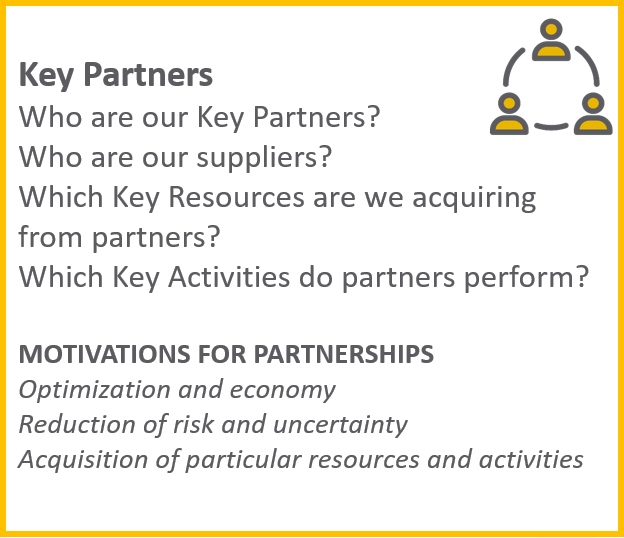 |
Cost Structure
|
This refers to the indication of all expenses incurred in connection with the functioning of the business model. Costs are easiest to calculate when the key resources, activities and partners of the company’s business model are known. Guiding questions:
|
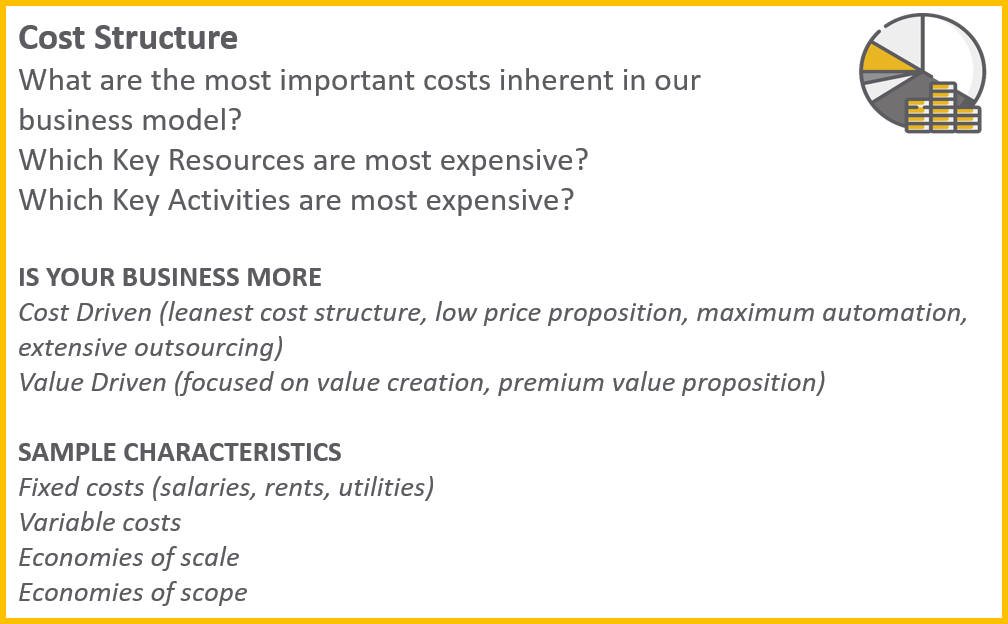 |
The Business Model Canvas
All these elements create the Business Model Canvas, which has the form of a board on which appropriate areas are written.
You can download the high definition printable Business Model Canvas here:

References and External Links
- Osterwalder A., Pigneur Y., Tucci C.L. (2005): Clarifying Business Models: Origins, Present, and Future of the Concept. Communications of the Association for Information Systems, 16, 1-25
- Zott C., Amit R., Massa L. (2011: The Business Model: Recent Developments and Future Research. Journal of Management, 1-25.
- (Afuah, Tucci, 2000), Afuah, A., Tucci, C.L. (2000). Internet business models and strategies
- Casadesus-Masanell R., Ricart J.E. (2011): Jak skonstruować zwycięski model biznesowy, “Harvard Business Review Polska”, Nr 103
- Falencikowski T. (2013): Spójność modeli biznesu. Koncepcja i pomiar, CeDeWu.PL, Warszawa
- Porter M. E.: Strategy and the Internet. Harvard Business Review 79, no. 3 (March 2001): 62–78.
- Laudon K.C., Traver C.G. (2012): E-commerce 2012. Busines. Technology. Society, Pearson Education Limited, United States of America.
- Norris M., West S. (2001): E-biznes, Wydawnictwa Komunikacji i Łączności, Warszawa.
- Osterwalder A., Pigneur Y.: Business Model Generation: A Handbook for Visionaries, Game Changers, and Challengers, New Jersey 2010.
- Zott, C., & Amit, R. (2017). Business model innovation: How to create value in a digital world. Marketing Intelligence Review, 9(1), 18-23.
Copyright @2021 – businessmodels.eu

